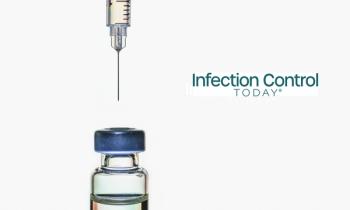
Far-UVC Technology Poised to Transform Indoor Infection Control
Far-UVC technology offers a promising solution for continuous disinfection in occupied spaces, with growing evidence supporting its safety, efficacy, and potential in health care environments.
Far-UVC technology is emerging as a transformative tool in infection prevention and control, offering continuous disinfection without harming people in occupied indoor spaces.
“It is different to traditional UVC or the conventional form of UVC, germicidal. And the main difference is that it operates at a different wavelength,” Ewan Eadie, PhD, MSci, CSci, MIPEM, the head of Scientific Services in the Photobiology Unit at Ninewells Hospital and Medical School in Dundee, Scotland, told Infection Control Today® (ICT®) in an interview.
Distinguished by its 222-nanometer wavelength, far-UVC light differs from conventional germicidal UV, which operates at 254 nanometers and penetrates deeper into tissues. Far-UVC, by contrast, is absorbed by the uppermost layers of skin and eyes, reducing the risk of damage while maintaining germicidal properties.
Paul A. Locke, JD, MPH, DrPH, professor in the Department of Environmental Health and Engineering at Johns Hopkins Bloomberg School of Public Health, also spoke during the ICT interview. He emphasized that far-UVC is not a silver bullet but an important addition to the infection prevention toolbox. Unlike other air disinfection systems that require air circulation or filtration, far-UVC inactivates pathogens directly in the air and on surfaces in real time, without needing to change human behavior. Its passive functionality allows it to operate in tandem with other technologies and infection prevention strategies.
“My expertise is looking at environmental health, and one area of environmental health that I will admit as an environmental health professional, we don't do as good a job as we should, is in the indoor air,” Locke said in the interview. “There's an expectation that if you're in an indoor space, the air is going to be clean and helpful. However, our regulations and techniques often fail to align with that goal. One of the most important things about UBC, I think, is that it's a tool we can use to help reach that goal. And that goal really should be an expectation that everybody has, especially if they're in a health care environment.
Safety remains a top concern. Clinical research, including studies involving individuals with highly sensitive skin conditions, has found no acute reactions when exposed to far-UVC at legal exposure limits. Long-term use in real-world settings, such as ophthalmology clinics, has shown no negative effects on eye health either. Additionally, far-UVC produces only negligible levels of ozone when properly installed, addressing environmental safety considerations.
The broader goal is clean indoor air, particularly in healthcare settings where vulnerable populations face heightened risks. Advocates argue that society should treat indoor air quality with the same seriousness as drinking water safety. Far-UVC has the potential to help meet that standard, especially in environments such as hospitals, schools, and long-term care facilities.
Despite its promise, far-UVC faces challenges to widespread adoption. Public skepticism, regulatory gaps, and concerns about commercial misuse have all slowed deployment. Experts call for more robust federal support, clearer safety standards, and continued interdisciplinary collaboration across healthcare, science, and industry.
Equity is also central to the vision for far-UVC. Its early deployment should prioritize communities at highest risk from infectious diseases, including immunocompromised patients and overburdened healthcare systems. As research evolves and evidence builds, the technology's role is expected to expand, guided by rigorous science and public health priorities.
Infection prevention professionals agree that clean air should be a right, not a privilege. Far-UVC may be a key piece of the puzzle—offering safer, smarter infection control in an increasingly interconnected world.
___
Additionally, ICT inquired about the regulatory and industry standards in place or under development to ensure the safe deployment of Far UVC technology in various environments. This was answered by the
Topline summary of the current Far-UVC standards, guidelines, and safety certifications:
The current
Health care and public settings where Far UVC is currently being implemented, and how effective it has been in reducing airborne and surface pathogens.
Numerous Ushio (the licensed manufacturer of the Care222 Lamps) Installation in Japan
- Full List -
https://clean.ushio.com/jp/case/achievement/ - Individual highlights -
https://clean.ushio.com/jp/case/work/ - Installation Interviews -
https://clean.ushio.com/jp/case/interview/
Passenger Transportation Vehicles
- 331 school buses in South Carolina
Krypton Far UV is Solution of Choice for Schools and Regional Governments - Far UV | 222nm Far UV-C Excimer Lamp Disinfection* Lighting - 56 ambulances in Zealand, Denmark
Highlighted at the ICFUST 2024 meeting and now appearing in peer reviewed papers, installations in major hospitals and long-term care facilities worldwide.
ICFUST scientific presentations
- USA: (Lit and Mount Sinai are completeing your Q&A document by Wednesday).
- Mount Sinai Long COVID Center:
https://litthinking.com/news-resources/mount-sinai-installs-visium-fixtures-using-state-of-the-art-far-uvc-technology-in-new-clinic/ - China:
- Beijing Tiantan Hospital,
- Fudan University ZhongShan Hospital: http://www.sjpm.org.cn/en/article/doi/10.19428/j.cnki.sjpm.2024.24467
- Shanghai Eastern Surgical Hospital
- Shanghai Renji Hospital
- Shandong Public Health Clinical Center
- United Arab Emirates:
- Sultan Bin Abdulaziz Humanitarian City Hospital in Riyadh
- Salmaniya Medical Complex in Bahrain
- Sheikh Khalifa Medical City in Ajman;
- Denmark:
- Aarhus University Hospital
- Kolding Hospital
- Rigshospitalet
- Vejle – long-term care facility
- Japan:
- Kobe University Hospital
- Canada:
- Nova Scotia - long-term care facility
Columbia University Dental Facility in NYC
- Far-UVC lamps have been installed in a large Dental Clinic in New York City. This was the first large-scale public installation of far-UVC in 2021, so the far-UVC light intensity was designed to be significantly below regulatory limits. A reduction rate of around 50% in airborne microbe levels was still measured.
Food production facilities
- United Kingdom: Turkey breeding facility to fight avian influenza
Newsletter
Stay prepared and protected with Infection Control Today's newsletter, delivering essential updates, best practices, and expert insights for infection preventionists.




